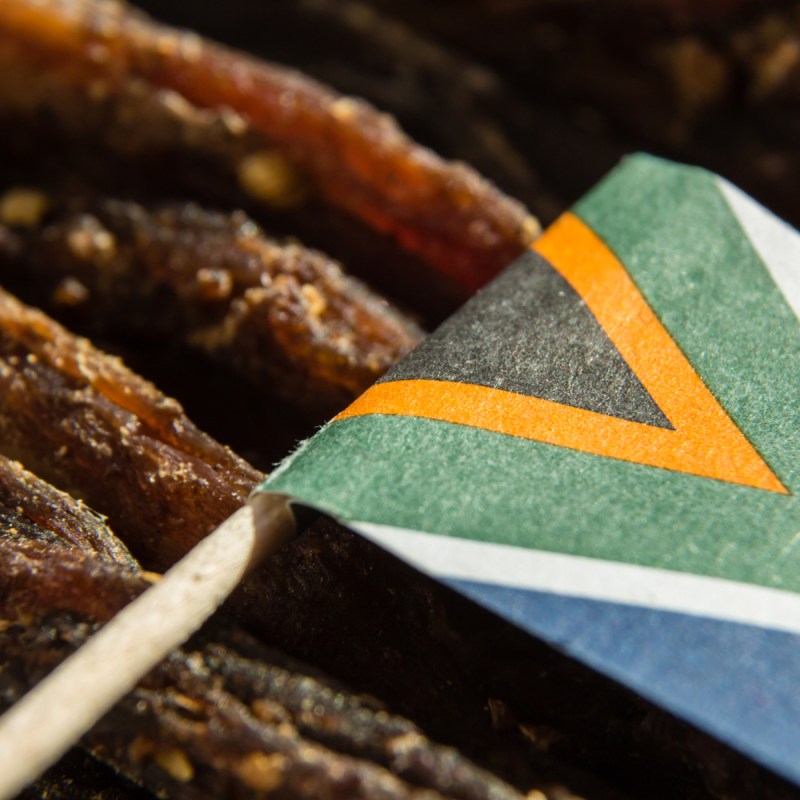
May I tempt you with a slice of bullfrog, a handful of stink bugs, or perhaps a giant caterpillar? Perhaps you’d like to wash it down with a swig of warm blood? No, this is not an episode of Fear Factor! Fancy yourself a bit of a foodie? Traveling in Africa will introduce you to some truly weird and wonderful foods. Come with an open mind and an empty stomach, and let’s see if you are brave enough to try some of these strange but fantastic local African delicacies.
Videos by TravelAwaits
1. Termites — Zambia, Malawi, Zimbabwe
The rainy season is just about to start here in Zambia. We haven’t had a drop of rain since March. Now it’s November, and we are scanning the skies for clouds and desperately looking for some moisture. With the first few rains, storms will come thousands of what we call here “Inswa,” what you may know as termites.
After the rain, the termites emerge from underground and take to the air. Attracted to the light, they will swarm toward it. If I forget to close the windows tight after the first rains, before I know it, the floor is crawling with inch long termites, who have been attracted to the house lights and flown in the open window. I don’t eat them myself, but my husband says he was perennially hungry at boarding school, in a remote part of Zambia. He and his friends had a special basket to catch the flying termites, and would then sneak into the school kitchen and cook them in the traditional way — pulling off their wings and frying in oil. My husband swears they were delicious.

2. Mopane Worm — Zambia, South Africa, Zimbabwe, Botswana
Mopane worms (actually caterpillars, from the emperor moth family) are found all over southern Africa including South Africa, Botswana, and Namibia. Here in Zambia where I live, they are a common dish among the Bemba tribe, my local tribe, where they are called “Ifinkubala.” Mopane worms can be eaten as a snack or served as a main meal.
Mopane worms are harvested twice a year, first during the early months of the rainy season and then again at the end of the rains. After harvesting, the caterpillars are squeezed (to remove the gut contents), parboiled, and dried before selling in the market.
3. Chitoum — West Africa, Ivory Coast
If you’re grossed out by Mopane worms, then you’re probably not going to be too keen on this next one either. Chitoum is a mid-day snack eaten mainly in West Africa. It’s a small, dark beetle that is gathered, disemboweled and fried, before being eaten as a dry and crunchy snack. It’s said to taste better than locusts and grasshoppers, which is next on our list, but I guess that’s just down to personal preference!

4. Grasshoppers — Uganda
In Uganda, these jumping insects are called “Nsenene,” where they are traditionally roasted or fried before being spiced. If you’re interested in trying one, catching them involves either a net or a bucket-and-tin contraption. They come out predominantly in April, May, and November.
To prepare this African delicacy, the wings and legs should be plucked off while they are still alive, just before throwing the insects into a frying pan. Grasshoppers produce their own “oil” while being cooked, and you can flavor them with salt, pepper, and your choice of spices. (If pulling off appendages while they’re alive sounds cruel, then freeze them for 40 minutes first, or pull their head off, removing the guts at the same time).
5. Stink Bugs — South Africa
I know, I know, another bug… but once again, this bug is an edible source of goodness. Don’t let the name put you off, you don’t actually taste the “stink,” the bugs are beheaded and squeezed to empty the gland that makes the smell, all before cooking. Once the gland has been emptied, South Africans usually boil the bugs and then sun-dry them, before eating them as snacks. These little critters are high in Vitamin B, so are actually pretty good for you. Some say they taste like a mixture of cinnamon and iodine, I’ll let you be the judge.
6. Giant Bullfrog — Namibia
The next weird and wonderful delicacy on the list is from Namibia. While frogs’ legs may be a delicacy in Europe, in this part of the world and with this particular frog, they don’t stop at just the legs, thighs, and feet — they eat the whole thing! Be warned though, timing is everything when eating this frog, and it all depends on their mating season. If incorrectly prepared or taken before it is mature (croaking), the levels of toxins in the skin can cause Oshiketakata (kidney failure), a burning sensation while peeing, and possibly death!
It should also be pointed out that this species is listed as endangered.

7. Ackee Plant — West Africa
The Ackee plant is a delicacy and traditional fare in West Africa. The plant is actually a fruit, and when eaten prematurely, is poisonous (causing vomiting, hypoglycemia, permanent neurological damage, and even death!). Ackee takes 8 weeks for the fruit to mature fully. When it is ready for consumption it splits open, showing three or four large black seeds. It is high in vitamin A, zinc, essential fatty acids, and protein.
Ackee often replaces eggs at breakfast and is served with fried onion and tomato. Alternatively, the edible part of the fruit is boiled then mixed with fish, chili, and other spices.
(The Ackee plant was exported from Africa to Jamaica in the mid-17th century, and is still enjoyed today by people living in the Caribbean).
8. Ostrich Egg Omelette
This is a dish for omelet lovers to get all “egg-cited” about! Here in Africa, we can make the mother of all omelets — with an ostrich egg. Bearing in mind that an ostrich egg can weigh more than 3 pounds, and is equal to about 24 normal eggs, imagine the size of omelet it can make! This is an omelet best shared with friends and I’m not yolking! An ostrich omelet is best served simply, with butter, salt, pepper, and maybe a little parsley.

9. Biltong — Southern Africa
I titled this list “Weird and Wonderful,” and to be honest, we’ve been focussing a bit too much on the weird thus far. Let me bring your attention to Biltong, which is not so weird but is definitely wonderful. Biltong is a South African specialty (though available all over southern Africa, even the world, now). Biltong is a dried, cured meat, ideally made from good quality cuts of meat, like rump or silverside, seasoned with spices and vinegar and hung out to dry. While biltong is traditionally made from beef, all kinds of meats can be used, including game meats such as ostrich or kudu.
Biltong is very popular in our house, especially with my husband and sons. So popular in fact, when my husband was tiring as I took him climbing up Mt. Kilimanjaro, biltong worked perfectly as a bribe to get him to the top!
Biltong is not dissimilar to beef jerky, though jerky is usually sliced into strips before the cooking/drying process, whereas biltong is air-dried as whole pieces of meat and then sliced. Biltong tends to be softer and less chewy than jerky.
10. Goats Head — Kenya
Keeping on with meat, let’s talk goats. On auspicious occasions, people in Kenya kill goats and make a variety of dishes from them, ranging from Nyama Choma (barbecue), to Mbuzi Fry (fried goat meat with copious amounts of onions) or even soup. But it’s the goat’s head that makes it onto our list. First, the head is roasted in flames, to burn off the hair and to give it flavor. Then the head is boiled for hours, even days, with people eating the soft meat and drinking the soup. The head is usually opened and its contents, including the brain, eaten.
11. Blood — Tanzania And Kenya
Perhaps you’ve worked up a thirst thinking about all these delicious African dishes just waiting for you to try. If that’s the case then may I offer you a thirst-quenching calabash of cow’s blood?
Starting at a young age, Maasai children are given cow’s blood mixed with their milk. This will be their meal, three times a day until they’re old enough to join older Maasai hunting and gathering. The Maasai use the drinking of cow’s blood as part of many of their traditions, including post circumcision and birthing rituals. It’s also used as a remedy for illness when it is mixed with milk and given to invalids.
To collect the blood, the cow’s jugular is nicked, usually with a spear or an arrow, and a calabash or clay pot is held below the entry point to catch the blood. A mixture of mud or hot ash is then applied to the wound to seal it, and the cows suffer no ill effects.
There you have my round up of dishes to try or perhaps just look at, on your next African holiday.
